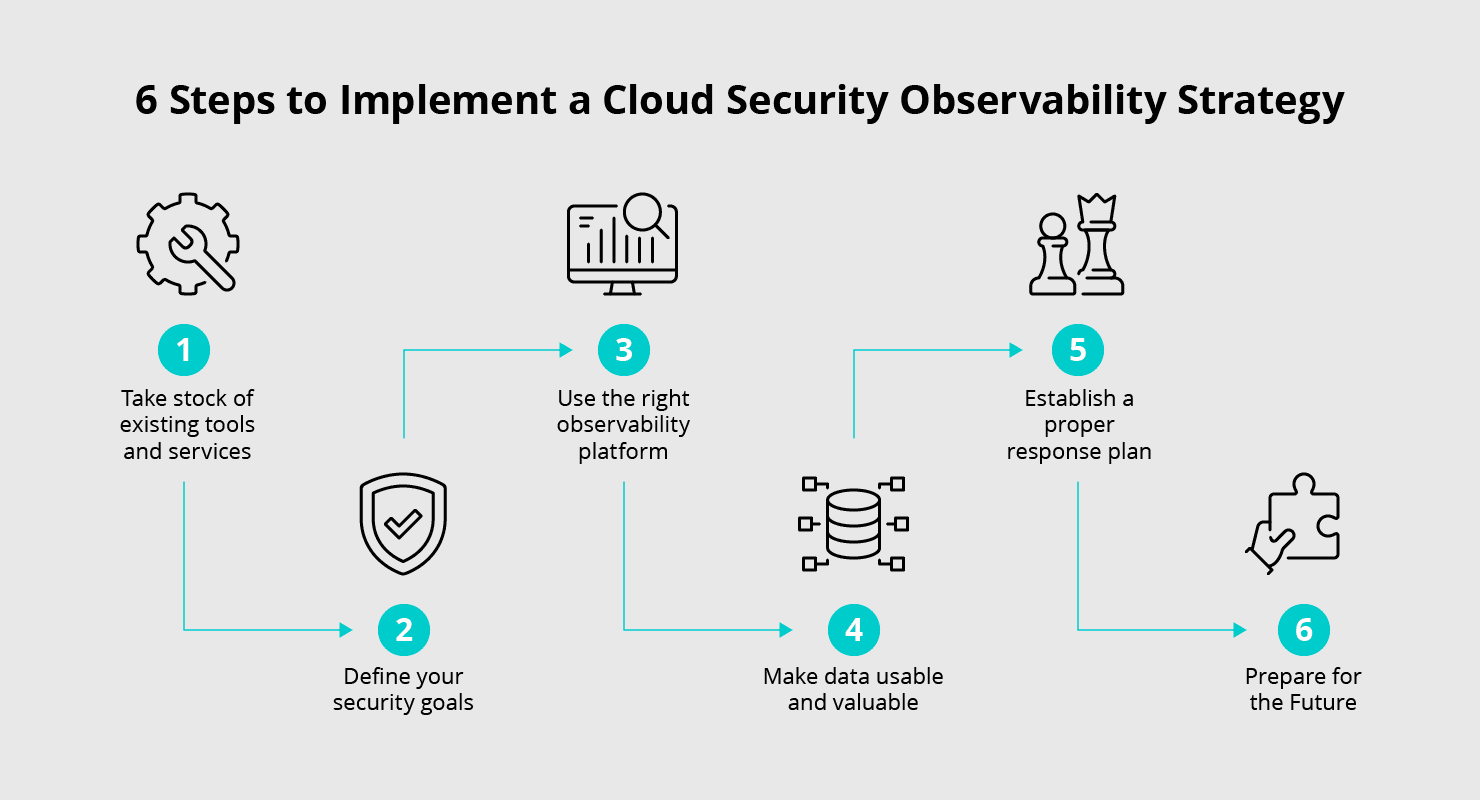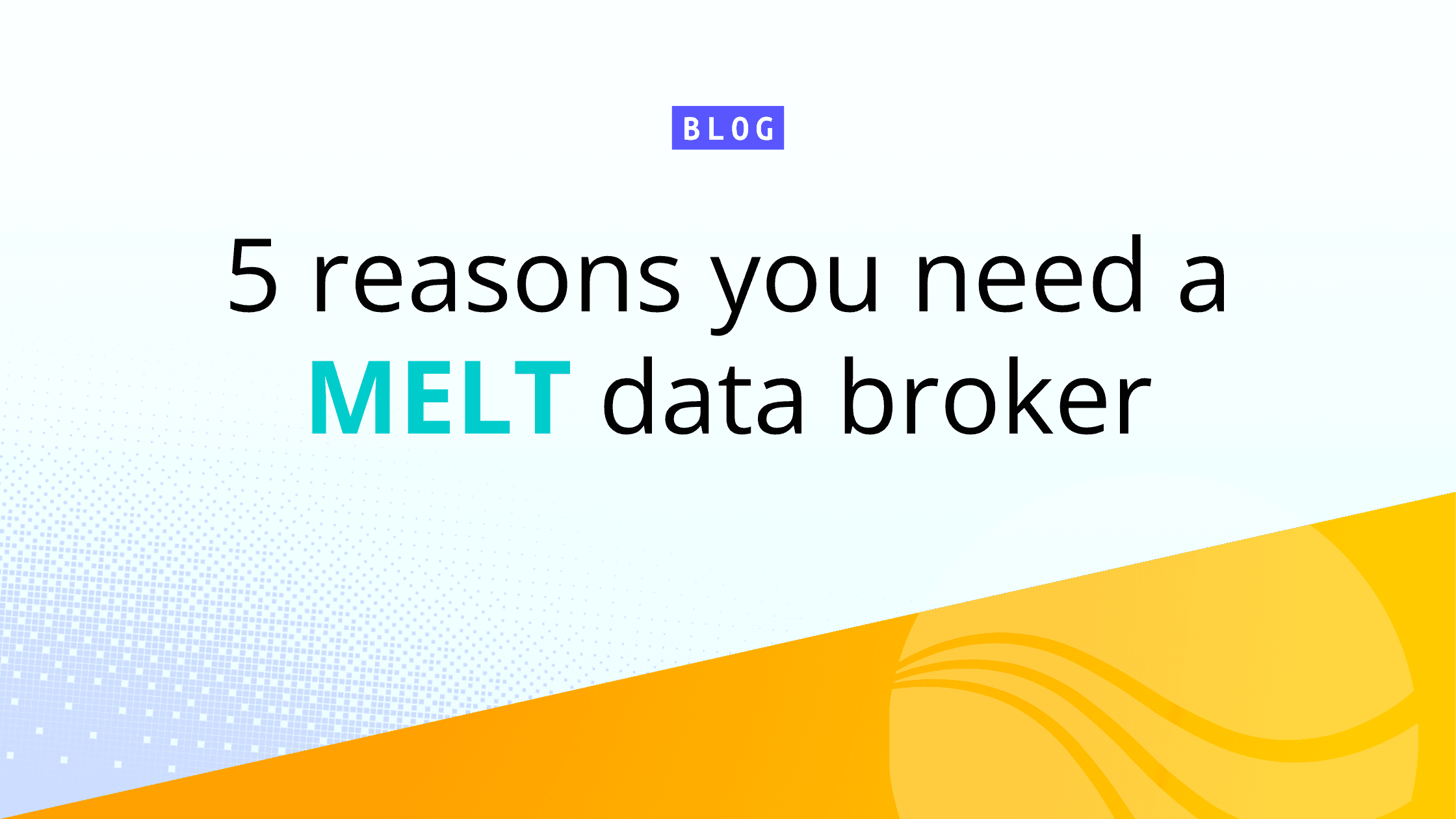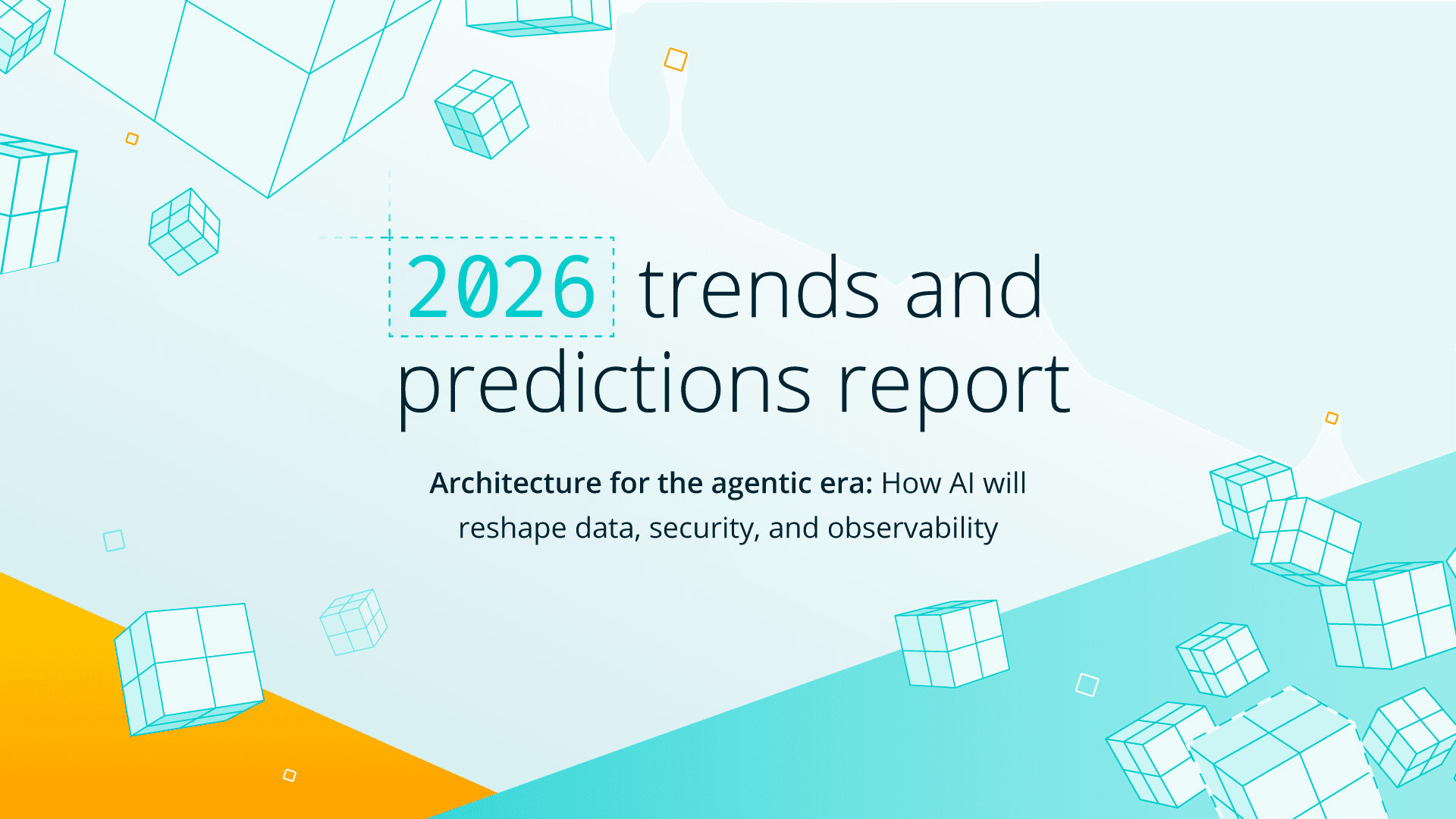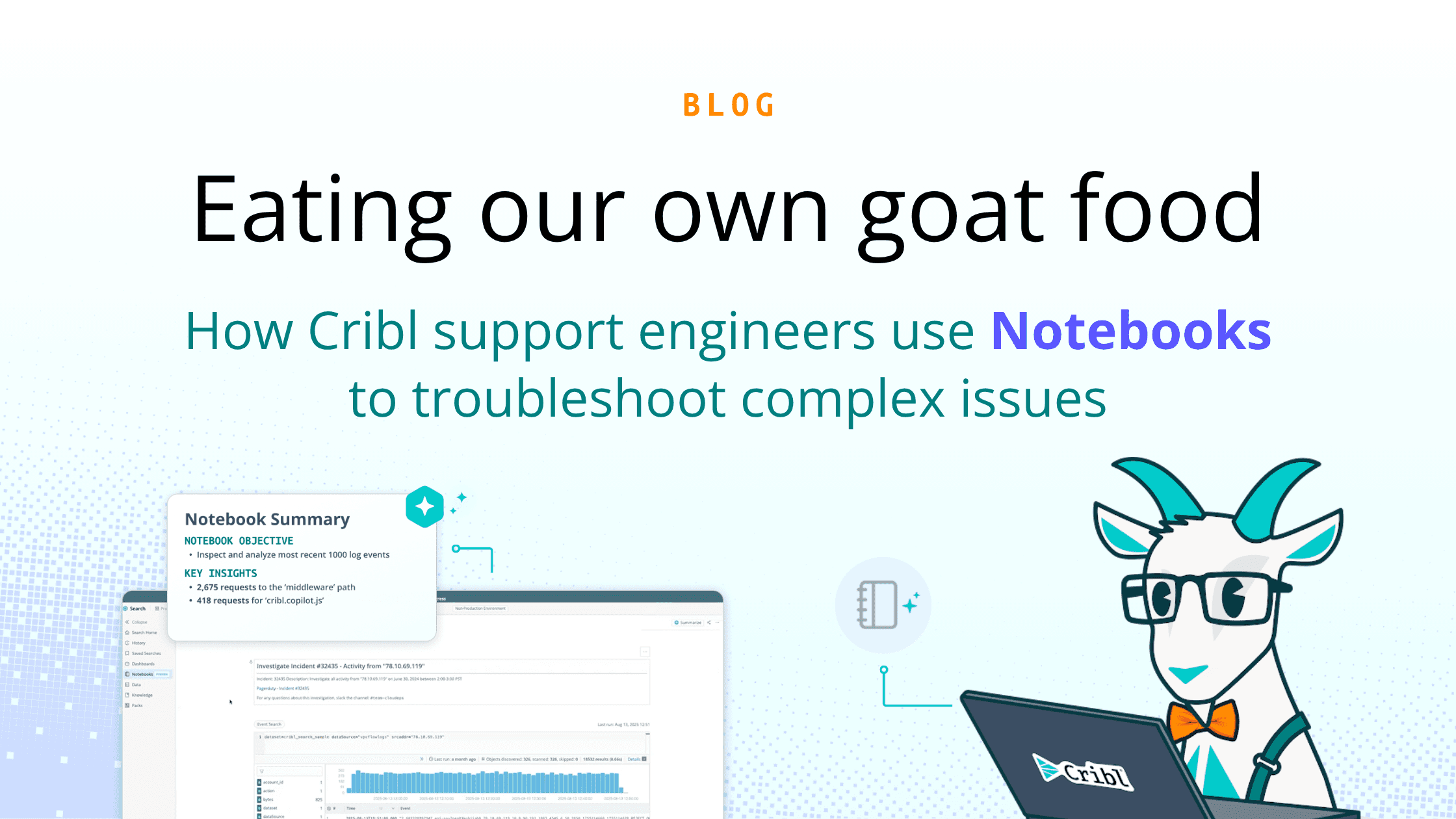Moving to the cloud is hard. Moving to the cloud and keeping systems secure, data governed, compliances met, and cyberattacks at bay, makes everyone’s jobs significantly harder. The number one concern we hear from Cribl customers about the cloud is, you guessed it — security.
If you’re in this boat — eager to adopt the cloud ASAP but also worried about the risks that come with having sensitive data in the cloud — don’t fret. We’re here to help.
Observability has traditionally been used by developers and IT teams to monitor their environments. It provides end-to-end visibility to allow for faster detection and response to incidents. Observability also gives a clearer understanding of infrastructure and application performance, as well as the end-user experience.
But did you know, observability can also be used to tackle some of your toughest security challenges? An observability solution can notify of security risks before they occur, protect cloud assets, and ensure compliance and industry standards and regulations are being met.
If you’re hoping to build a successful cloud strategy that involves both observability and security, here are the 6 key steps to building a cloud security observability strategy:

Take Stock of Existing Tools and Services
The first step is to identify all the systems used in your cloud environment. These include the applications and services running in the cloud, what’s keeping the underlying infrastructure up and running, and the tools used to move and store data in the cloud. This will help you understand the scope of your security posture and what needs to be protected.
Define Your Security Goals
Next, figure out what security goals you have and what you’re hoping to achieve. Do you want to detect threats in real time? Retain security data while drastically cutting costs? Do you want to perform faster, more efficient incident response? By setting your security goals, you can better align which features and capabilities of your observability platform can help you achieve those goals.
Use the Right Observability Platform
When it comes to managing data, cloud observability platforms are able to help organizations comply with regulatory and industry requirements. They’re designed to handle the enormous amounts of data generated in the cloud, and can elastically scale as your organization’s data needs change and grow.
The right platform also allows for better collaboration between security, IT, and developer teams. By having one place for all observability and security data, different teams can use that same pool of data to work more dynamically and act faster. So when it comes to detecting malicious actors, everyone is on the same page. A cloud observability platform can also help your teams understand where and why performance issues are occuring, get ahead of unexpected downtime and delays, and ultimately help your organization save on overall cloud costs.
Make Data Usable and Valuable
There’s an extraordinary amount of data being generated every minute. And because there’s just so much data, organizations have a tough time getting a grasp of it all. What could’ve been data turned into valuable insights end up falling through the cracks and become essentially unusable.
An effective security observability data pipeline can help make data usable and valuable — it’ll collect, reduce, enrich, and route data to the right destination. Moving data in the cloud, between regions and even between different public cloud platforms, adds another layer of complexity. That’s why choosing a vendor-agnostic observability pipeline can help curate, reshape, and transform data so that it is in a usable format, enabling security teams to generate valuable insights that they can base business decisions around.
Establish a Proper Response Plan
Every second counts when it comes to troubleshooting. The longer it takes to resolve an issue, the more detrimental it is to the business. Security teams especially need to act fast to detect security breaches or threats before sensitive data becomes vulnerable and exposed.
But the endless amounts of data, coming from all various sources, and all structured differently, makes it that much harder to respond and act fast. A cloud observability solution can help establish the right response plan as soon as a security issue arises.
First — the right people need to know their role and be held accountable. Observability can help notify these security team members as soon as an issue is on the horizon. Once alerted, they need to act fast before end-users are impacted. This means pinpoint exactly where the issue is occuring, understand why it’s happening, and quickly resolve it. Once the issue has been mitigated and the fire has been put out, teams need to conduct proper root cause analysis and see if machine learning and automation can be implemented to bypass similar issues in the future.
Prepare for the Future
Data privacy and security is only getting more stringent. Protecting sensitive data is going to be an even greater priority in the coming years, and rule breakers will face harsher punishments and pricier fines. Having a solid cloud security observability strategy in place can better ensure your cloud infrastructure is safe and secure, and can help you get ahead of security risks with real-time monitoring and alerting. Protect the future of your organization with a cloud security observability solution. No more being vulnerable, no more breaches, no more cyberattacks.
Cloud security observability strategies help mitigate security risks in cloud-native and cloud-first environments and can bring the confidence your organization needs to adopt the cloud on time, under budget, all while ensuring data is kept secure.
Ready to get started with your own cloud security observability strategy? Contact the team at Cribl today!
Cribl, the Data Engine for IT and Security, empowers organizations to transform their data strategy. Customers use Cribl’s suite of products to collect, process, route, and analyze all IT and security data, delivering the flexibility, choice, and control required to adapt to their ever-changing needs.
We offer free training, certifications, and a free tier across our products. Our community Slack features Cribl engineers, partners, and customers who can answer your questions as you get started and continue to build and evolve. We also offer a variety of hands-on Sandboxes for those interested in how companies globally leverage our products for their data challenges.







